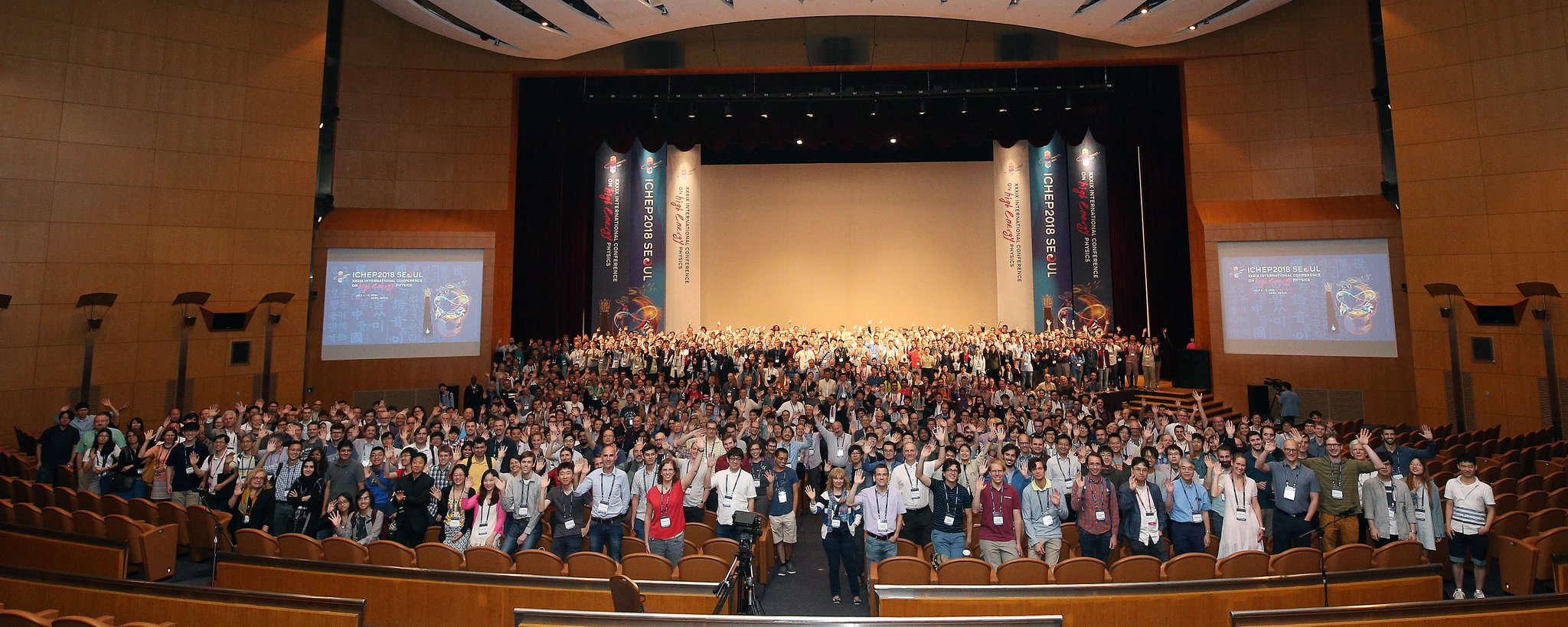It’s that time of the year when physicists from around the world gather at the “biggie” of conferences in high-energy physics — the biennial International Conference on High Energy Physics (ICHEP). This year’s event, the 39th in the series, is taking place in Seoul, South Korea, on 4–11 July. Here’s a taste of the latest findings that are being presented at the conference by the collaborations behind the main experiments at the Large Hadron Collider (LHC): ALICE, ATLAS, CMS and LHCb.
CMS is presenting several new high-impact results. A key highlight is a comprehensive combination of searches for Higgs boson pair production using the 2016 dataset. Such "di-Higgs" searches are crucial for constraining the Higgs boson self-coupling and help set constraints on new physics scenarios that predict enhancements in the production rate. The CMS analysis considers four different final states, with one Higgs boson decaying into a bb pair and the other decaying into γγ, ττ, bb ̄, or a pair of vector bosons, and is the most sensitive to date at the LHC. The collaboration is also showcasing more than 13 direct searches for new physics. These include a novel search using the combined 2016 and 2017 datasets (corresponding to about 80 fb-1) for dark matter in final states with a leptoquark and missing transverse momentum. Leptoquarks are hypothetical particles that appear in many well-motivated extensions of the Standard Model (SM), and they have generated a lot of interest for addressing recently reported B-flavour anomalies. While no significant excess is observed in the data, the dark-matter signature investigated by CMS represents an until-now-uncovered signature in the search for dark matter.
ATLAS is unveiling a wide range of results including major developments in the measurement of Higgs boson properties, observations of key electroweak production processes, new high-precision tests of the SM, and searches for new phenomena. In a preliminary result based on data recorded from 2015 to 2017, ATLAS reports the observation of the Higgs to bb decay mode, which is predicted to be the dominant Higgs decay mode. In addition, ATLAS reports the observation of the VH production mode. With these two results, the main production and decay modes of the Higgs have now all been observed by ATLAS. The presence of the Higgs can also be tested in measurements of the scattering of weak bosons at high energy. ATLAS describes two observations of electroweak processes with dominant vector-boson-scattering contributions: same-sign WW scattering and WZ scattering. These results represent an important test of the electroweak sector of the SM. The SM can also be probed through precision measurements of electroweak parameters. ATLAS reports a measurement of the effective electroweak mixing angle θW with a precision of 0.15% on sin2(θW), which is competitive with the most precise single-experiment measurement of this key SM parameter.
LHCb is discussing results in many areas, including studies of rare decays that could expose weaknesses in the SM, CP violation in beauty and charm decays, properties of recently discovered particles, forward electroweak and top physics, studies of QCD, and heavy-ion physics. The collaboration is also presenting progress in hardware and software towards Upgrade I of the experiment’s detector, and plans for Upgrade II that will enable the detector to take data at even higher rates than in Upgrade I, which in turn will have higher rates than today. Among the results are searches for CP violation in the decays of charmed hadrons, where the effect has never been observed, and in decays of Bsmesons. A new measurement of the lifetime of the Ωc0baryon is also being presented; intriguingly, it is four times higher than the previous world average. LHCb also reports a measurement of one of the least-well-known CP-violation parameters, gamma, using data collected in 2015 and 2016. Combined with the corresponding LHCb result for 2011–2012, this is the most precise determination of gamma in a single decay mode.
ALICE is presenting a number of results on the production of particles, from photons to nuclei and hypernuclei, in collisions of protons and/or nuclei. For example, the collaboration reports a measurement of the azimuthal anisotropy of particle production in xenon–xenon collisions and its use in disentangling the effects of initial density distributions in nuclei and of the viscosity of the quark–gluon plasma. A measurement of the production rate of charm baryons consisting of one heavy charm quark and two light quarks, based on a large sample of data from proton–lead collisions, shows a larger number of these particles than was expected on the basis of previous rate measurements that used electron–positron collision data. This suggests that the presence of additional light quarks from the colliding proton and nucleus affects the way in which charm quarks emerge from the collisions. Further measurements based on proton–proton and lead–lead collision data are being made to understand the mechanisms by which baryons are produced in high-energy collisions.
For more details, see the ALICE, ATLAS, CMS and LHCb websites.

